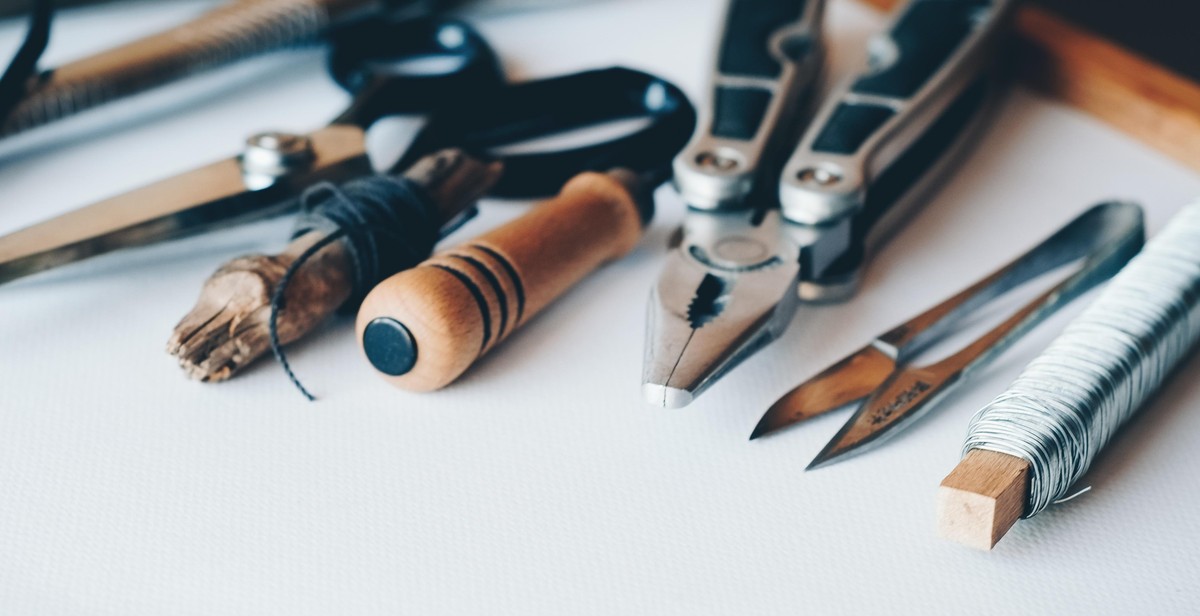Introduction: Benefits of a DIY Standing Desk
Are you tired of sitting at a desk all day? Many people are discovering the benefits of standing desks, which can improve posture, reduce back pain, and increase productivity. However, purchasing a standing desk can be expensive. That’s where a DIY standing desk comes in.
A DIY standing desk is a cost-effective way to improve your workspace and reap the benefits of standing while you work. Not only is it cheaper than buying a standing desk, but it also allows you to customize the desk to your specific needs and preferences.
Benefits of a DIY Standing Desk
1. Cost-effective: A DIY standing desk can be made for a fraction of the cost of a store-bought standing desk.
2. Customizable: You can choose the height, size, and style that works best for you, and even add features like a keyboard tray or monitor stand.
3. Health benefits: Standing while you work can improve posture, reduce back pain, and increase energy levels.
4. Increased productivity: Standing desks have been shown to increase productivity and creativity, as well as reduce the risk of weight gain and obesity.
In this article, we’ll show you how to build your own DIY standing desk, step-by-step, so you can start reaping the benefits of standing while you work.

Materials Needed for DIY Standing Desk
Building a DIY Standing Desk requires a few essential materials to make the project a success. Below are the materials needed for a basic DIY Standing Desk:
1. Wooden Desk Top
The wooden desk top is the most crucial component of the DIY Standing Desk. It serves as the work surface and provides stability to the standing desk. The size of the desk top may vary depending on the user’s preference, but it is recommended to use a desk top that is at least 24 inches deep and 36 inches wide. The desk top can be made of any wood material, but it is recommended to use a high-quality wood material that can withstand the weight of the equipment that will be placed on it.
2. Adjustable Legs
The adjustable legs are essential to the DIY Standing Desk as they provide the flexibility to adjust the height of the desk to the user’s preference. The legs can be made of any material, but it is recommended to use high-quality metal or steel material that can withstand the weight of the desk top and the equipment that will be placed on it. Adjustable legs can be purchased from any hardware store or online retailers.
3. Screws and Nuts
Screws and nuts are essential materials in building the DIY Standing Desk. They are used to attach the adjustable legs to the wooden desk top. It is recommended to use high-quality screws and nuts that can withstand the weight of the desk top and the equipment that will be placed on it. The size of the screws and nuts may vary depending on the thickness of the desk top and the size of the adjustable legs.
4. Tools
The tools needed to build a DIY Standing Desk are:
- Drill
- Screwdriver
- Wrench
- Measuring tape
- Saw
5. Optional Materials
Additional materials that can be used to enhance the DIY Standing Desk include:
- Cable management system
- Anti-fatigue mat
- Monitor arms
- Keyboard tray
- Mouse pad
| Materials | Recommended Quality |
|---|---|
| Wooden Desk Top | High-quality wood material |
| Adjustable Legs | High-quality metal or steel material |
| Screws and Nuts | High-quality screws and nuts |

Step-by-Step Guide: How to Build a DIY Standing Desk
Building your own standing desk can be a fun and rewarding project. Not only does it save you money, but it also allows you to customize the desk to fit your specific needs and preferences. Here’s a step-by-step guide to building your own DIY standing desk:
Step 1: Measure and Cut Desk Top
The first step in building a standing desk is to measure and cut the desk top. You can use a variety of materials for the desk top, such as plywood or MDF. Measure the width and length of the desk top, and use a saw to cut it to the desired size. Make sure to sand the edges of the desk top to ensure a smooth finish.
Step 2: Attach Adjustable Legs
Next, you will need to attach adjustable legs to the desk top. Adjustable legs are necessary for a standing desk, as they allow you to adjust the height of the desk to fit your specific needs. You can purchase adjustable legs from a hardware store or online. Follow the manufacturer’s instructions to attach the legs to the desk top.
Step 3: Secure Screws and Nuts
After attaching the legs to the desk top, you will need to secure the screws and nuts. Use a wrench to tighten the nuts and ensure that the legs are securely attached to the desk top. Test the stability of the desk by applying pressure to the top and legs to make sure that it is sturdy and safe.
Once you have completed these three steps, your DIY standing desk is ready to use. You can further customize the desk by adding accessories such as a keyboard tray or monitor stand. Enjoy the benefits of a standing desk, such as improved posture and increased energy levels, while saving money and creating a desk that is tailored to your needs.

Tips for Using a Standing Desk
Standing desks have become increasingly popular due to the health benefits they offer. However, it is important to use them correctly to avoid any discomfort or injury. Here are some tips to help you make the most of your standing desk:
Start Slow
If you are new to using a standing desk, it is important to start slow. Begin by standing for short periods and gradually increase the time as your body adjusts. Standing for too long can cause fatigue and discomfort, so it is important to listen to your body and take breaks as needed.
Wear Comfortable Shoes
The shoes you wear can make a big difference when using a standing desk. Choose shoes that are comfortable and supportive, as standing for long periods can put a strain on your feet and legs. Avoid high heels or shoes with little support, as they can cause discomfort and even lead to injury.
Adjust Desk Height Correctly
Adjusting your desk height correctly is crucial in ensuring that you are comfortable and maintain good posture while standing. The desk should be at elbow height, allowing your arms to rest comfortably on the surface. Your monitor should be at eye level, and your keyboard and mouse should be within reach without causing you to hunch over.
- Use an anti-fatigue mat to reduce pressure on your feet and legs.
- Take breaks regularly to stretch and move around.
- Consider using a footrest to reduce pressure on your feet.
By following these tips, you can make the most of your standing desk and enjoy the health benefits it offers.
| Pros | Cons |
|---|---|
| Reduces the risk of obesity and weight gain | Standing for too long can cause fatigue and discomfort |
| Reduces the risk of chronic diseases such as heart disease and diabetes | May not be suitable for individuals with certain health conditions |
| Improves posture and reduces the risk of back pain | Can be more tiring than sitting |

Conclusion
Building a DIY standing desk can be a great way to improve your health and productivity without breaking the bank. With the right materials and tools, you can create a desk that fits your specific needs and preferences.
Some key takeaways from this guide:
- Choose the right height for your desk based on your height and posture.
- Consider using an adjustable base or risers to customize the height of your desk.
- Use ergonomic accessories like a standing mat and monitor mount to improve comfort and reduce strain.
- Be mindful of your posture and take breaks to stretch and move throughout the day.
Remember, building a standing desk is just one step towards a healthier lifestyle. It’s important to incorporate other healthy habits like regular exercise and a balanced diet.
By following these tips and taking care of your body, you can enjoy the benefits of a DIY standing desk for years to come.
